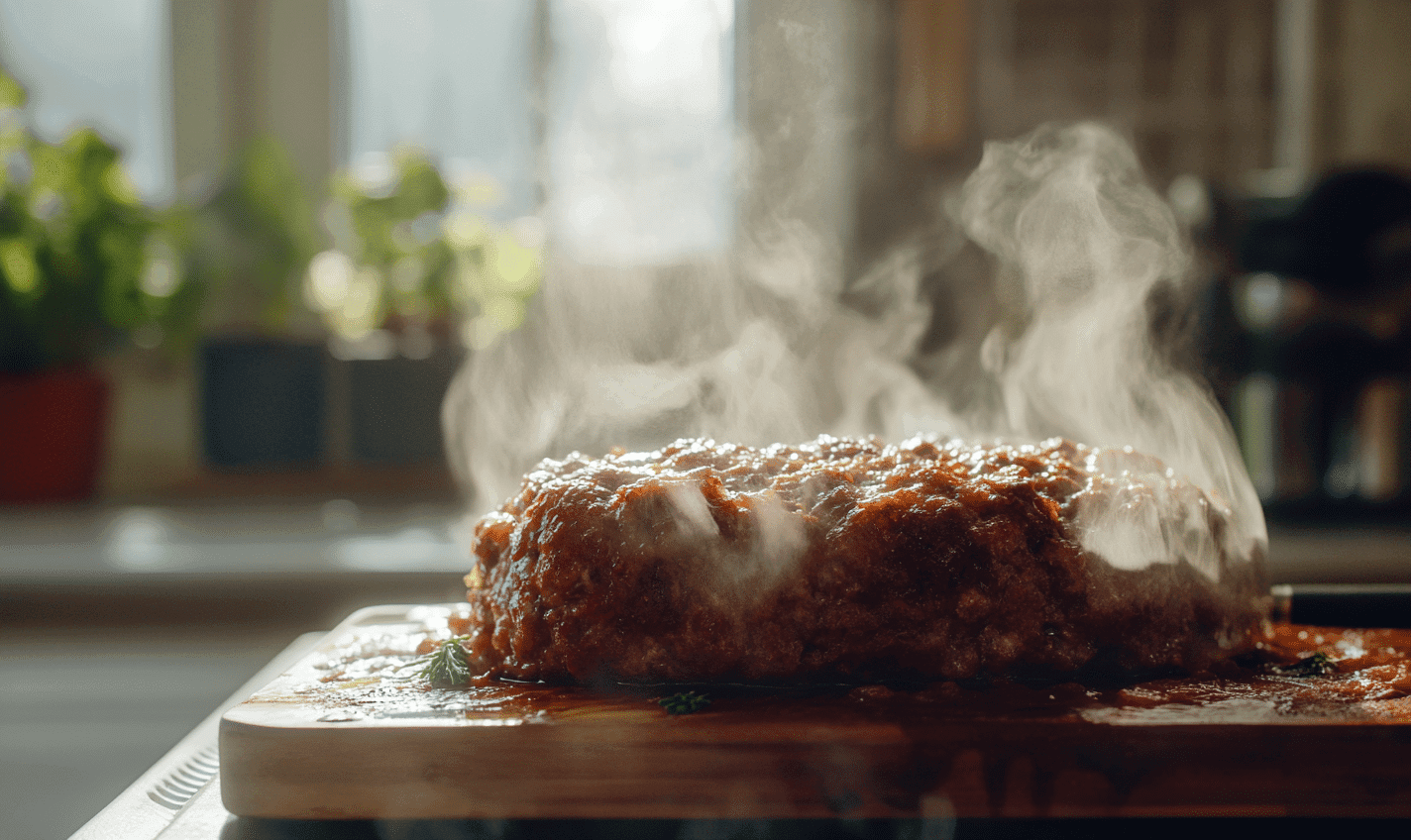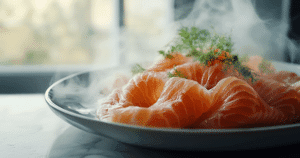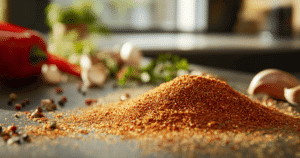Jump to:
Estimated reading time: 11 minutes
Table of contents
Introduction
When it comes to cooking meatloaf, the choice of the baking pan is a crucial factor that can significantly affect the outcome of your dish. The question “Is it better to bake meatloaf in glass or metal?” may seem trivial at first, but it actually has a substantial impact on the texture, flavor, and even cooking time of your meatloaf. Understanding the differences between these two types of pans—glass and metal—can help you make an informed decision that best suits your cooking style and the results you want to achieve.
This guide will delve into the specifics of how glass and metal pans affect the baking process, the pros and cons of each, and tips on how to make the most out of whichever pan you choose. By the end of this article, you’ll have a clear understanding of whether it’s better to bake meatloaf in glass or metal, ensuring that your next meatloaf is as delicious as possible.
The Science Behind Baking: Glass vs. Metal
To understand whether it’s better to bake meatloaf in glass or metal, it’s essential to grasp how these materials interact with heat. The type of pan you use affects not only the cooking time but also the texture and flavor of your meatloaf.
Glass Baking Pans
Glass is a non-reactive material that absorbs heat slowly but retains it well. When you bake meatloaf in a glass pan, the pan gradually heats up, which can result in more even cooking. Glass holds onto heat longer than metal, meaning that your meatloaf will continue to cook even after it’s removed from the oven. This characteristic is both an advantage and a disadvantage, depending on your desired outcome. For a detailed comparison of glass and metal baking pans, refer to this Serious Eats article.
- Heat Retention: Glass retains heat well, which is ideal for dishes that require slow, even cooking. However, this can lead to overcooking if the meatloaf is left in the pan too long after baking.
- Visual Monitoring: One of the benefits of using a glass pan is the ability to see through it. This can help you monitor the browning process on all sides of the meatloaf.
- Even Cooking: The slow heating process of glass results in evenly cooked meatloaf, which is particularly useful for thicker loaves. For more on even cooking techniques, you can check out this guide on temperature control in meatloaf cooking.
Metal Baking Pans
Metal pans, typically made of aluminum or stainless steel, are excellent heat conductors. When you bake meatloaf in a metal pan, the pan heats up quickly, which can lead to faster cooking times and a crispier crust. However, metal pans also lose heat quickly once removed from the oven, reducing the risk of overcooking. Learn more about the pros and cons of baking in metal versus glass in this Allrecipes article.
- Quick Heating: Metal heats up faster than glass, which can reduce cooking time. This makes metal pans a good choice if you prefer a meatloaf with a well-browned, crispy exterior.
- Crispier Crust: The rapid heat conduction of metal pans promotes the Maillard reaction, which is responsible for creating a flavorful, browned crust on the surface of the meatloaf.
- Lightweight and Durable: Metal pans are generally lighter and more durable than glass, making them easier to handle, especially when removing the hot pan from the oven. If you’re also interested in exploring different methods for enhancing your meatloaf’s flavor, consider reading about smoking techniques.
Pros and Cons: Glass vs. Metal for Meatloaf
Both glass and metal pans have their strengths and weaknesses when it comes to baking meatloaf. Let’s explore the pros and cons of each to determine which might be the best option for your kitchen.
Baking Meatloaf in Glass
Pros:
- Even Heat Distribution: Glass pans heat up slowly and evenly, which can lead to a more uniformly cooked meatloaf.
- Retains Heat: Glass retains heat well, which is beneficial for keeping the meatloaf warm after baking.
- Visual Cues: Since glass is transparent, you can easily monitor the doneness and browning of your meatloaf from all angles.
Cons:
- Longer Cooking Time: Because glass heats up more slowly, baking time might be longer than with a metal pan.
- Overcooking Risk: The excellent heat retention of glass means that the meatloaf continues to cook even after it’s removed from the oven, potentially leading to dryness if not monitored carefully.
- Fragility: Glass pans can break or crack if exposed to sudden temperature changes or if dropped.
Baking Meatloaf in Metal
Pros:
- Faster Cooking: Metal pans heat up quickly, which can shorten the overall cooking time for your meatloaf.
- Crispier Crust: The rapid heating promotes the formation of a crispy, flavorful crust, which many people find desirable in meatloaf.
- Durability: Metal pans are generally more durable and less prone to breaking compared to glass.
Cons:
- Uneven Heat Distribution: Metal can sometimes cause uneven cooking, especially if the pan is too thin or of poor quality. This can lead to overcooked edges and an undercooked center.
- Heat Loss: Metal pans lose heat quickly once removed from the oven, which might not be ideal if you want to keep your meatloaf warm for an extended period.
- Reactive Material: Certain metal pans, especially those made of aluminum, can react with acidic ingredients, potentially altering the flavor of your meatloaf. For a more detailed comparison, you can refer to this Bon Appétit guide.
How to Bake Meatloaf in Glass or Metal for the Best Results
Now that we’ve examined the characteristics of glass and metal pans, let’s discuss how to get the best results from each when baking meatloaf. Whether you prefer glass or metal, there are specific techniques that can enhance your cooking.
Tips for Baking Meatloaf in Glass
- Preheat the Pan: Consider preheating your glass pan in the oven before adding the meatloaf mixture. This can help reduce cooking time and prevent the bottom of the loaf from becoming soggy.
- Monitor the Cooking Time: Since glass retains heat, it’s crucial to monitor the cooking time carefully. Check the meatloaf with a meat thermometer a few minutes before the recipe’s recommended time to prevent overcooking.
- Rest Before Slicing: Allow the meatloaf to rest in the glass pan for about 10 minutes after removing it from the oven. This resting period lets the juices redistribute, making for a juicier meatloaf.
- Avoid Sudden Temperature Changes: To prevent cracking or breaking, avoid placing a hot glass pan on a cold surface or exposing it to extreme temperature changes.
Tips for Baking Meatloaf in Metal
- Choose a Quality Pan: Opt for a heavy-duty metal pan to ensure even heat distribution. Thin, cheap metal pans may lead to uneven cooking.
- Line the Pan: To prevent sticking and make cleanup easier, line your metal pan with parchment paper or lightly grease it before adding the meatloaf mixture.
- Check for Doneness Early: Metal pans cook meatloaf faster, so start checking the internal temperature of your meatloaf about 10 minutes before the recipe suggests. The meatloaf is done when it reaches an internal temperature of 160°F (71°C).
- Let it Cool: After removing the meatloaf from the oven, let it rest in the pan for a few minutes before slicing. This helps the juices settle and enhances the flavor.
The Role of the Maillard Reaction in Meatloaf Baking
The Maillard reaction is a chemical process that occurs between amino acids and reducing sugars when food is exposed to heat. This reaction is responsible for the browning and development of complex flavors on the surface of your meatloaf. Whether you bake meatloaf in glass or metal, the Maillard reaction plays a crucial role in the final taste and texture of your dish.
Metal Pans and the Maillard Reaction
When you bake meatloaf in a metal pan, the Maillard reaction is more pronounced due to the rapid heating and high temperatures that metal pans can achieve. This results in a more pronounced crust and richer flavor, particularly if you prefer a meatloaf with a crispy exterior.
Glass Pans and the Maillard Reaction
While glass pans heat up more slowly, they can still promote the Maillard reaction, albeit at a slower rate. The result is often a meatloaf with a softer, more tender crust compared to one baked in a metal pan. If you prefer a milder, less crispy crust, baking in a glass pan might be the better option. For further details on the Maillard reaction in baking, see this Handle the Heat article. Additionally, if you’re interested in how different ingredients can impact your meatloaf’s texture and flavor, consider exploring the role of milk in meatloaf recipes in this in-depth guide.
Which Is Better for Baking Meatloaf: Glass or Metal?
Deciding whether to bake meatloaf in glass or metal ultimately depends on your personal preferences and the specific outcome you’re aiming for. Both materials have their strengths, and each can produce a delicious meatloaf when used correctly.
When to Choose a Glass Pan
- For Even Cooking: If you prioritize even cooking and a tender, uniformly cooked meatloaf, a glass pan might be the best choice.
- For Moist Meatloaf: The heat retention properties of glass can help keep the meatloaf moist, making it ideal for recipes that require longer cooking times or leaner meats.
- If You Like a Softer Crust: Glass pans are better suited for those who prefer a meatloaf with a softer, less crispy crust.
When to Choose a Metal Pan
- For Faster Cooking: If you’re short on time and want a meatloaf that cooks quickly, a metal pan is the way to go.
- For a Crispy Crust: Metal pans excel at creating a well-browned, crispy crust, making them ideal for those who love that extra texture in their meatloaf.
- For Durability: If you’re looking for a pan that’s durable and less prone to breaking, metal is a more reliable option.
Common Mistakes to Avoid When Baking Meatloaf
Regardless of whether you bake meatloaf in glass or metal, there are common mistakes that can affect the outcome of your dish. Avoiding these pitfalls can help you achieve the perfect meatloaf every time.
- Overmixing the Meat
Overmixing the meatloaf mixture can result in a dense, tough loaf. Mix the ingredients just until they are combined to keep the meatloaf tender. - Not Using a Thermometer
One of the biggest mistakes is not checking the internal temperature of your meatloaf. Always use a meat thermometer to ensure it reaches 160°F (71°C) to guarantee it’s fully cooked without being dry. - Skipping the Rest Period
Allowing the meatloaf to rest after baking is crucial for a juicy final product. This rest period allows the juices to redistribute throughout the meat, preventing dryness. - Using the Wrong Size Pan
Using a pan that’s too large or too small can lead to uneven cooking. Choose a pan size that matches the quantity of your meatloaf mixture to ensure it cooks evenly. - Not Adjusting for Pan Type
Remember that glass and metal pans cook differently. If switching between the two, adjust your cooking time and temperature accordingly to avoid overcooking or undercooking your meatloaf. For more information on cooking adjustments, refer to this comprehensive guide on covered vs. uncovered meatloaf baking.
Frequently Asked Questions.
Will the baking time differ between glass and metal pans?
Yes, the baking time may differ slightly. Because glass heats more slowly, a meatloaf in a glass pan may need a few extra minutes to reach the desired internal temperature. Keep an eye on the internal temperature, aiming for 160°F (71°C), and use a meat thermometer for accuracy.
Does one type of pan affect the flavor or texture of meatloaf?
Yes, a metal pan can give the meatloaf a more pronounced crust due to its ability to transfer heat quickly, while a glass pan may create a softer, more evenly cooked texture. For a classic crusty edge, a metal pan is ideal; for a tender, evenly cooked meatloaf, a glass pan works well.
What about ceramic pans for meatloaf?
Ceramic pans are another option for baking meatloaf. Like glass, ceramic heats evenly and retains heat well, creating a tender meatloaf. However, ceramic can take longer to heat up, so baking times may need slight adjustments.
Conclusion
So, is it better to bake meatloaf in glass or metal? The answer depends on what you value most in your meatloaf. Glass pans offer even cooking and a softer texture, making them ideal for those who prefer a more tender meatloaf. On the other hand, metal pans provide faster cooking times and a crispier crust, which might appeal to those who enjoy a meatloaf with a bit more bite.
Both glass and metal pans can produce a delicious meatloaf when used correctly, and understanding the nuances of each material can help you make the best choice for your next meal. Whether you’re looking for a tender, moist loaf or a quick, crispy meatloaf, knowing whether to bake meatloaf in glass or metal will set you on the path to success in the kitchen.
Experiment with both types of pans and see which one gives you the results you prefer. With this guide, you now have the knowledge to make an informed decision and bake the perfect meatloaf every time.






